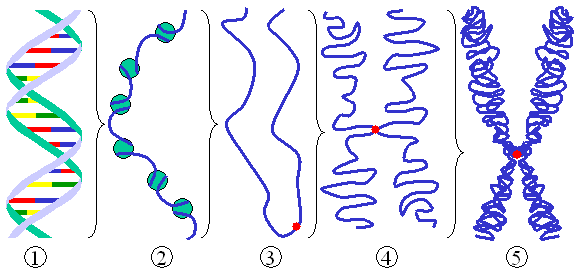Chromatin
|
|
Chromatin is the substance of a chromosome and consists of a complex of DNA and protein in eukaryotic cells. It can be made visible by staining (thus the name which literaly means coloured material). The nucleic acids are generally in the form of double-stranded DNA. The major proteins involved in chromatin are histone proteins. In a eukaryotic cell, nearly all DNA is found compacted in chromatin. DNA is packaged into chromatin both to constrain the size of the molecule and to allow the cell to control expression of the chromatin packaged genes. Changes in chromatin structure are effected mainly by methylation and acylation of the nucleosome proteins. Chromatin structure is also of importance with respect to the DNA replication.
There are three major levels of chromatin organization:
- nucleosome - "beads on a string"
- 30 nm condensed chromatin fiber
- chromosome
Sperm chromatin is an exception to the above. During spermiogenesis, the male germ cell's chromatin is remodelled into a more tightly packaged, compact structure. This process is associated with the cessation of transcription and involves nuclear protein exchange. The histones are mostly displaced, and replaced by protamines, small, arginine-rich proteins.

Two distinct types of chromatin can be distinguished:
See also
Reference
- van Holde KE. 1989. Chromatin. New York: Springer-Verlag. ISBN 0387966943.
External links
- Recent chromatin publications and news (http://www.chromatin.co.uk)
zh:染色质 bg:Хроматин de:Chromatin es:Cromatina fr:Chromatine he:כרומטין ja:クロマチン nl:Chromatine pl:Chromatyna pt:Cromatina fi:Kromatiini sv:Kromatin
